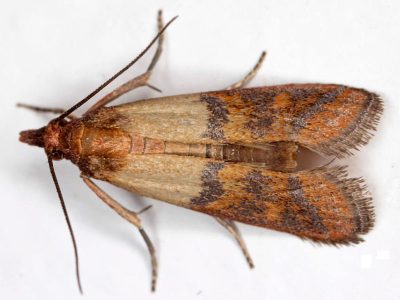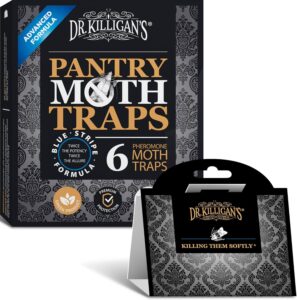Dealing with a pantry moth infestation can be frustrating and unsanitary. The right pantry moth spray can effectively eliminate these pests and prevent their return. Our comprehensive guide covers the best pantry moth sprays available, from natural options to powerful commercial solutions, helping you choose the most effective treatment for your specific needs.
Quick Picks: Best Pantry Moth Sprays
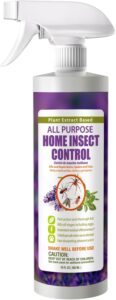
Editor’s Choice
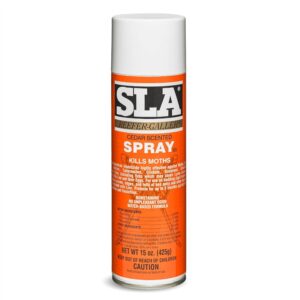
Most Effective
- Understanding Pantry Moths and Why Sprays Work
- Types of Pantry Moth Sprays
- How to Choose the Right Pantry Moth Spray
- Proper Application Techniques
- Integrated Pest Management Approach
- Prevention Strategies
- Common Mistakes to Avoid
- When to Call Professional Pest Control
- Frequently Asked Questions
- Conclusion
Understanding Pantry Moths and Why Sprays Work
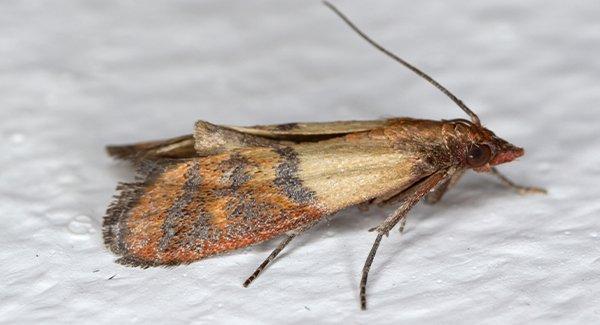
Pantry moths, primarily the Indian meal moth, are among the most common household pests that infest stored food products. These small, brownish moths lay eggs in grains, cereals, flour, and other dry goods, creating a cycle of contamination that can spread throughout your entire pantry.
Always remove all food items from treated areas before applying any pantry moth spray. Clean surfaces thoroughly and allow complete drying before returning food products to avoid contamination.
Pantry moth sprays work by targeting multiple life stages of these pests. The most effective sprays kill adult moths on contact while also eliminating eggs and larvae hidden in cracks and crevices. Understanding the moth lifecycle helps explain why comprehensive treatment is essential for complete elimination.
Types of Pantry Moth Sprays
Choosing the right type of pantry moth spray depends on your specific situation, safety concerns, and infestation severity. Each category offers distinct advantages for different household needs.
Natural and Organic Sprays
Natural pantry moth sprays use plant-based ingredients like essential oils and botanical extracts to repel and eliminate moths. These sprays offer safer alternatives for households with children, pets, or sensitivities to synthetic chemicals.
Benefits of Natural Sprays
- Safe for use around food storage areas
- Non-toxic to humans and pets
- Pleasant, natural scents
- Environmentally friendly
Limitations
- May require more frequent applications
- Less effective against severe infestations
- Results may take longer to appear
- Higher cost per application
EcoVenger All Purpose Insect Control
Editor's ChoiceHow Does It Work
How to Use
- Remove all food items from the pantry before treatment
- Clean shelves thoroughly with soap and water
- Shake the bottle well and spray directly onto surfaces where moths have been seen
- Pay special attention to cracks, crevices, and corners
- Allow surfaces to dry completely before returning food items
- Reapply every 3-4 weeks or as needed
- Kills all insect life stages including eggs
- 100% natural and non-toxic formula
- Safe for use around children and pets
- Pleasant scent that dissipates quickly
- No staining on most surfaces
- Long-lasting protection up to 4 weeks
- Higher cost compared to synthetic alternatives
- May require more frequent applications for severe infestations
- Natural scent may not appeal to all users
DIY Natural Spray Solutions
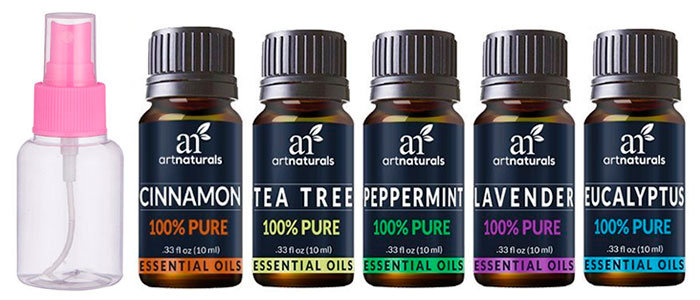
Homemade pantry moth sprays offer an economical approach to pest control using common household ingredients. While these solutions may have limited effectiveness against severe infestations, they serve as excellent preventive measures and complement other control methods.
DIY Spray Success Tips
- Always test spray on a small, inconspicuous area first
- Use distilled water to prevent mineral buildup
- Shake mixture thoroughly before each use
- Apply during cooler parts of the day for better effectiveness
- Combine with thorough cleaning for best results
Essential Oil Pantry Moth Spray Recipe
- 2 cups distilled water
- 10 drops peppermint essential oil
- 10 drops lavender essential oil
- 5 drops cedarwood essential oil
- 1 teaspoon liquid dish soap (as emulsifier)
Mix ingredients in a spray bottle, shake well before use, and apply to clean pantry surfaces. Reapply weekly or after cleaning.
White Vinegar Spray
Create a powerful natural deterrent by mixing equal parts white vinegar and water. The strong acidic scent repels moths while cleaning and sanitizing surfaces. This solution works particularly well for regular maintenance and prevention.
Soap-Based Spray
Mix 1 teaspoon of liquid dish soap with 2 cups of water to create a suffocating spray that eliminates moths and larvae on contact. This gentle yet effective solution works by coating insects and blocking their breathing pores.
Commercial Insecticide Sprays
Professional-grade insecticide sprays provide maximum effectiveness against severe pantry moth infestations. These products contain synthetic active ingredients specifically formulated to eliminate moths quickly and provide longer-lasting protection.
Reefer-Galler SLA Cedar Scented Moth Spray
Most EffectiveHow Does It Work
How to Use
- Ensure proper ventilation before application
- Remove all food items and utensils from treatment area
- Shake can well and hold 12-18 inches from surface
- Spray directly on moths and their hiding places
- Apply to pantry shelves, cracks, and crevices
- Allow area to dry completely before food storage
- Kills moths and larvae on contact
- Provides up to 3 months of residual protection
- Pleasant cedar scent masks chemical odor
- Professional-strength formula
- Effective against multiple insect species
- Ready-to-use convenience
- Contains synthetic chemicals requiring careful handling
- Not safe for use around cats
- Requires complete food removal during treatment
- May cause respiratory irritation without proper ventilation
Insecticide sprays require careful handling and should never be applied directly to food-contact surfaces. Always wear protective equipment, ensure adequate ventilation, and keep children and pets away from treated areas until completely dry.
Residual Spray Treatments
Residual sprays create long-lasting protective barriers that continue eliminating moths for weeks or months after application. These professional-grade treatments are most effective for severe infestations or commercial food storage areas.
| Spray Type | Effectiveness Duration | Safety Level | Best Use Case | Cost Range |
|---|---|---|---|---|
| Natural/Organic | 1-4 weeks | Very Safe | Prevention & Light Infestations | $$-$$$ |
| DIY Solutions | 1-2 weeks | Very Safe | Maintenance & Prevention | $ |
| Commercial Insecticides | 4-12 weeks | Moderate | Active Infestations | $$ |
| Residual Treatments | 3-6 months | Low to Moderate | Severe Infestations | $$$-$$$$ |
How to Choose the Right Pantry Moth Spray
Selecting the most effective pantry moth spray requires evaluating your specific situation, safety requirements, and infestation severity. Consider these key factors to make an informed decision:
- Infestation Severity: Light infestations respond well to natural sprays, while severe problems may require commercial insecticides for effective control.
- Household Safety Needs: Homes with children, pets, or family members with chemical sensitivities should prioritize natural or organic formulations.
- Treatment Area Size: Large pantries or commercial spaces benefit from professional-grade residual sprays that provide extended protection.
- Budget Considerations: DIY solutions offer economical options for regular maintenance, while commercial products provide better value for severe infestations.
- Application Convenience: Ready-to-use sprays offer convenience, while concentrate formulas provide flexibility and often better value.
Proper Application Techniques
Effective pantry moth spray application requires systematic coverage of all potential hiding spots and breeding areas. Moths typically hide in cracks, crevices, and behind stored items where they feel protected.
Success begins with thorough preparation. Remove all food items, vacuum shelves and cracks, and clean surfaces with soap and water before applying any spray treatment.
Step-by-Step Application Process
- Empty and Clean: Remove all food items, containers, and shelf liners from the pantry. Vacuum all surfaces, paying special attention to corners and cracks.
- Inspect Thoroughly: Look for signs of moth activity including webbing, larvae, pupae, and adult moths. Note heavily infested areas for targeted treatment.
- Apply Systematically: Spray from top to bottom, ensuring complete coverage of shelves, walls, and door frames. Don’t forget ceiling corners and baseboards.
- Focus on Problem Areas: Give extra attention to cracks, crevices, and any areas showing signs of infestation.
- Allow Complete Drying: Wait for surfaces to dry completely before returning any items to prevent contamination.
- Monitor and Reapply: Check for continued moth activity and reapply according to product instructions or as needed.
Integrated Pest Management Approach
The most successful pantry moth elimination combines spray treatments with complementary control methods. This integrated approach addresses all aspects of the infestation cycle and prevents future problems.
Identification & Monitoring
Use pheromone traps to identify problem areas and monitor treatment effectiveness. Regular inspections help catch new infestations early.
Sanitation
Regular cleaning removes food debris and eliminates breeding sites. Vacuum cracks and crevices weekly during treatment periods.
Food Storage
Store all dry goods in airtight containers to prevent new infestations and contain existing problems to specific products.
Environmental Control
Reduce humidity and maintain cool temperatures to make conditions less favorable for moth reproduction and development.
Prevention Strategies
Preventing pantry moth infestations is significantly easier and more cost-effective than eliminating established populations. Implement these proven prevention strategies to keep your pantry moth-free:
Essential Prevention Practices
- Inspect all new food purchases before storing
- Use airtight containers for all dry goods
- Rotate stock regularly using first-in, first-out principles
- Clean spills immediately and vacuum regularly
- Maintain proper ventilation to reduce humidity
- Apply preventive spray treatments monthly
Long-Term Maintenance Schedule
Establish a regular maintenance routine to prevent reinfestation. Monthly preventive spray applications, combined with quarterly deep cleaning and inspection, provide the best long-term protection.
Common Mistakes to Avoid
Understanding common application mistakes helps ensure treatment success and prevents wasted time and money on ineffective approaches.
- Applying spray without first removing all food items
- Skipping thorough cleaning before treatment
- Focusing only on visible moths while ignoring eggs and larvae
- Using insufficient spray coverage in cracks and crevices
- Returning food items before surfaces are completely dry
- Failing to follow up with additional treatments as needed
When to Call Professional Pest Control
While many pantry moth infestations respond well to spray treatments, certain situations require professional intervention for effective resolution.
Consider professional pest control services when:
- Infestations persist after multiple spray treatments
- Moths spread to multiple rooms or food storage areas
- You discover extensive structural damage from larvae
- Family members have severe chemical sensitivities
- Commercial or restaurant settings require certified treatment
Frequently Asked Questions
How long does it take for pantry moth spray to work?
Most pantry moth sprays begin working immediately upon contact with insects. You should see dead moths within hours of application. However, complete elimination may take 2-4 weeks as eggs hatch and larvae mature into adults that contact treated surfaces.
Natural sprays may take slightly longer to show results but provide safer alternatives for sensitive households.
Can I use pantry moth spray directly on food containers?
Never apply pantry moth spray directly to food containers or food-contact surfaces. Always remove all food items before treatment and clean containers separately with soap and water.
For ongoing protection, store food in pest-proof containers and apply spray only to surrounding pantry surfaces.
Are natural pantry moth sprays as effective as chemical ones?
Natural sprays are highly effective for prevention and light infestations but may require more frequent applications. Chemical sprays typically provide faster knockdown and longer residual protection for severe infestations.
The best choice depends on your specific situation, safety concerns, and infestation severity.
How often should I reapply pantry moth spray?
Application frequency depends on the product type and infestation severity. Natural sprays typically require reapplication every 2-4 weeks, while commercial insecticides may last 6-12 weeks.
During active infestations, more frequent applications may be necessary until the problem is completely resolved.
Is it safe to use pantry moth spray around pets?
Safety depends on the specific product formulation. Natural and organic sprays are generally safe around pets when used as directed. Chemical insecticides may require keeping pets away from treated areas until surfaces are completely dry.
Always read product labels carefully and consult your veterinarian if you have concerns about specific ingredients.
Can pantry moths develop resistance to spray treatments?
While resistance is possible with repeated use of the same active ingredients, it’s uncommon in household situations. Rotating between different types of sprays and combining treatments with other control methods helps prevent resistance development.
Integrated pest management approaches are most effective for long-term control.
Conclusion
Choosing the right pantry moth spray depends on balancing effectiveness, safety, and convenience for your specific situation. Natural options like EcoVenger provide excellent results for most households, while commercial insecticides offer maximum power against severe infestations.
Remember that spray treatments work best as part of a comprehensive approach that includes proper sanitation, food storage practices, and ongoing monitoring. With the right combination of treatments and prevention strategies, you can eliminate pantry moths and keep them from returning.
The most effective pantry moth control combines immediate spray treatment with long-term prevention strategies. Start with natural options for safety, escalate to commercial products if needed, and always maintain proper food storage practices to prevent reinfestation.
